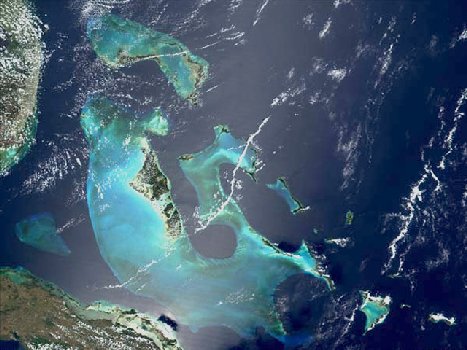| Islands and Archipelagos |
| Islands are areas of land that protrude above
the surface of the sea, a lake or a river. Islands in the sea may be coastal
or oceanic. Coastal islands are islands only thanks to today's sea level.
Some are linked to the coast by a causeway at low tide. Similarly, when
sea levels were some 100 metres lower during the last ice age, many of
today's coastal islands were part of the mainland.
Cephalonia is the largest of the Ionian Islands off the west coast of Greece. The islands of Dalmatia in the Adriatic were the tops of parallel ridges and the British Isles were connected to mainland Europe by dry land. (Conversely, the fjords of Norway and New Zealand are glacier-cut valleys which were flooded as sea levels rose. ) A large collection of islands, such as those in the Aegean Sea, is called an archipelago.
The islands of Croatia's Dalmatian coastline were created when coastal valleys were flooded as sea levels rose at the end of the ice age. Islands in the mid-ocean may be large fragments of continental crust, such as Madagascar or the North and South islands of New Zealand, or true oceanic islands such as the Hawaii Islands and the small scattered islands of Polynesia.
The islands of the Bahamas sit atop an extensive carbonate platform just off the North American continent. The remote island of Kerguelen in the Indian Ocean is in fact just the tip of a large, subsided continental fragment - the Kerguelen Plateau. Oceanic islands are volcanic in origin, rising from the oceanic crust as underwater volcanoes until they form an island when they reach the surface. Extinct volcanoes often gradually subside, but in tropical waters they can leave behind a ring of living coral, which forms a coral island or atoll. |
| Links | ||||||
|


